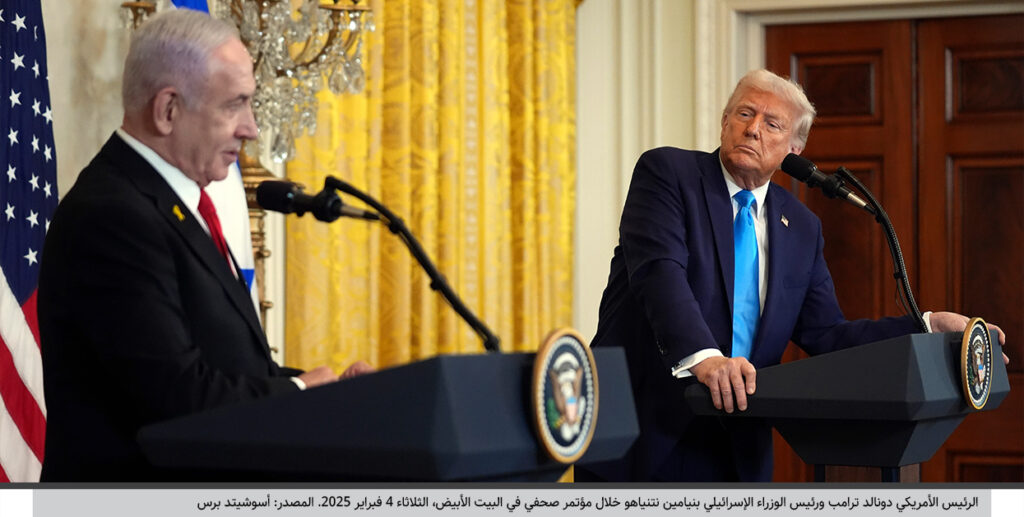
The Israeli-American track is undergoing a qualitative shift with the announcement of US envoy Steve Whittoff of a “comprehensive deal” to stop the war in Gaza, including the release of hostages, the disarmament of Hamas, reconstruction, and the imposition of an international administration led by Washington, in a unilateral path that deviates Hamas from any negotiating role. The deal coincides with an Israeli plan to occupy the Gaza Strip in stages, and impose security control and alternative civilian administration, and this approach aims to impose the “day after” the war as a fait accompli serving Israeli goals.
The Israeli-American path towards the war in the Gaza Strip is undergoing a qualitative shift, with the US special envoy to the Middle East, Steve Whitkov, announcing the development of a “comprehensive deal” for a ceasefire that goes beyond the logic of partial solutions that have prevailed in the past months. This shift comes after a series of indirect negotiations between Israel and Hamas, under the auspices of regional and international parties, to reveal an escalating trend towards imposing unilateral field and security arrangements. This path reflects an Israeli in-depth architecture of the post-war reality, by drawing the features of the “next day” in the Gaza Strip in isolation from the Palestinian parties.
Context of the Comprehensive Deal Proposal
On August 2, 2025, the US special envoy to the Middle East, Steve Whitkov, announced working with Israel on a “comprehensive deal” for a ceasefire in Gaza, including all files: the release of all detainees, the complete disarmament of Hamas, and reconstruction, with the imposition of international control over the US-led Strip, as he explained during his visit to Israel and his meeting with Israeli officials and the families of the detainees, pointing to US President Donald Trump’s rejection of “partial deals.”
This proposal comes after Israel announced on July 24, 2025, the withdrawal of its negotiating delegation from the talks, against the backdrop of Hamas’s response to the proposal, which came within the framework of the June negotiations, and then included a temporary ceasefire for 60 days, a partial exchange of prisoners, and the opening of humanitarian crossings. It also coincided with the U.S. announcement of its withdrawal as a party to indirect mediation, motivated by Hamas not showing serious enough ceasefire, and U.S. President Donald Trump’s announcement of “alternative options” that would be explored to free detainees and end the war.
On the ground، , this proposal was followed by Israeli Prime Minister Benjamin Netanyahu’s announcement that Israel would continue to occupy the Gaza Strip, with the approval of US President Donald Trump. It is the plan approved by the cabinet on August 8, which requires its stages to evacuate Gaza City from its population, pushing about 900,000 people from the central and northern Gaza Strip towards the south, and then imposing control over the city, followed by control of refugee camps in the center, to include military operations areas where Israeli detainees are likely to be present. The plan also laid out five principles to end the war: disarming Hamas, returning detainees living and dead, transforming Gaza into a demilitarized zone, Israeli security control over the Strip, and creating an alternative civilian administration that does not belong to Hamas or the Palestinian Authority.
In fact, the Whitkov proposal and the Israeli field measures reveal a unilateral path taken by both Israel and the United States, which first goes beyond the multilateral negotiating framework, neutralizes Hamas as a negotiating party and as an actor in the future security and field arrangements in the Strip, and transforms the war file in the Gaza Strip, and the next day, from a local, regional and international affair, to a file belonging to the Israeli government and its policies.
Comprehensive Deal: What Does Hamas Mean?
On the one hand, Hamas faces a major dilemma as a negotiating party, as it seems that its demands and requirements are not commensurate with the actual field data, especially in terms of demanding the withdrawal of the entire Israeli army from the Gaza Strip, at a time when the latter has prepared the ground for a long stay, and in terms of losing the negotiating papers that it held during the first months of the war, in addition to the inability of the movement to make substantial concessions declared in the geography and control of the Gaza Strip, because of its impact on its image among the people of the Gaza Strip, which means that the restrictions facing the movement make it a more obstructing party than an actor, as presented in Israeli-American perceptions.
On the other hand, the proposal, as a final solution to the war, provides a vision that the war can end if Hamas agrees to its contents, and considering that Hamas does not actually have the authority to agree to explicit clauses in the occupation of the Gaza Strip, and it is unlikely that it will agree to hand over its weapons, which will lead it to reject, which may put it in front of popular accountability for the continuation of the war without a horizon or little results, especially since local incidents have preceded this proposal and intersected with it, as areas of the Gaza Strip witnessed demonstrations and protests against Hamas, and calls for it to show greater flexibility in negotiations. In addition, Israel aims to direct some international and regional pressure to stop the war towards Hamas, as an obstructionist party to achieve this.
Moreover, the exclusion of Hamas from the negotiating framework comes after several indications that an Israeli quest to exclude it from the arrangements of the day after the war. استؤنفت الحرب VY 17 March 2025 After the end of the first phase of اتفاق وقف إطلاق النار Announced on January 19, 2025, without waiting for the results of the second and third phases, which were supposed to shape the sector the day after the war. During this period, Israel worked to exclude Hamas from the arrangements for securing aid, and created forces that competed with it in maintaining and controlling security, assigning the task of distributing and protecting aid toمؤسسة غزة الإنسانيةOn 5 August, the cabinet approved a mechanism to resume the gradual and partial introduction of commercial goods such as food and health commodities to a limited number of local traders in the Gaza Strip, after being examined and inspected by the Land Crossings Authority, and provided that they are subject to security control. In addition, it has provided support to the Yasser Abu al-Shabab militia, which now controls parts of eastern Rafah and is expanding the experience in other parts of the Strip.
Comprehensive deal: What does it mean for Gaza
Israel’s departure, with the support of the United States, towards a unilateral path is not practical a strategic shift in Israeli policies or in its actions on the ground, as much as it imposes field and administrative arrangements that seek to achieve them since the outbreak of the war, so that it keeps Gaza under a conditional Israeli security and humanitarian administration, during which the results of the war are imposed as a permanent equation, without addressing fundamental political issues or major issues such as lifting the siege, reconstruction, or the future of governance in the Strip. This is in line with the content of the “Next Day Document of the War” approved by the Cabinet in February 2024, which included the removal of Hamas’s rule and the imposition of security control over the Strip
Indeed, not only has Israel worked to achieve this goal on the ground, but it has for some time neutralized leaders who reject or fear the idea of occupation from their positions, including إقالة وزير الدفاع يوآف غالانت The appointment of Yisrael Katz in his place, then the resignation of the Chief of Staff of the Army Herzi Halevi on March 6, 2025 and the appointment of Eyal Zemiro, and the resignation of the head of the Shin Bet intelligence service, Ronen Barr and the appointment of David Zinni in May 2025, and before that the resignation of each of the رئيس حزب “معسكر الدولة”، بيني غانتس، Gady Eisenkot of the War Council, cementing the approval of Netanyahu’s plan for the occupation of Gaza with the cabinet’s approval when it was put to a vote on August 8.
On the other hand, it complements the unilateral track and the huge military operation to be launched throughout the Gaza Strip, with the previous military operations and intersects with it in the targets, especially the military operationعربات جدعون” Launched by the Israeli army and continuing since May 18, 2025, the objectives of which are to create the Gaza Strip towards a long-term Israeli occupation. The development of a plan to evacuate the northern and central Gaza Strip also comes in the same context with the extensive military operation launched by the Israeli army on October 6, 2024 to evacuate the far north in the areas of Jabalia and Beit Hanoun.
Perhaps the most dangerous in light of the current events, Israel’s attempt to direct about 900 thousand of the people of the Gaza Strip towards the south, which means in practice that the north and center of the Strip have been emptied of its inhabitants, and that the south has become the population of the Gaza Strip almost all, indicating that Israel is continuing to prepare on the ground and politically to displace the people of the Gaza Strip.
Finally,The proposal and terms of the comprehensive deal are an attempt to reshape the scene in the Gaza Strip in line with the course of the war and the Israeli objectives within it, by undermining the basis of the negotiation and imposing the day after the war, which has already begun to be formed on the ground within security and administrative arrangements subject to Israel.
